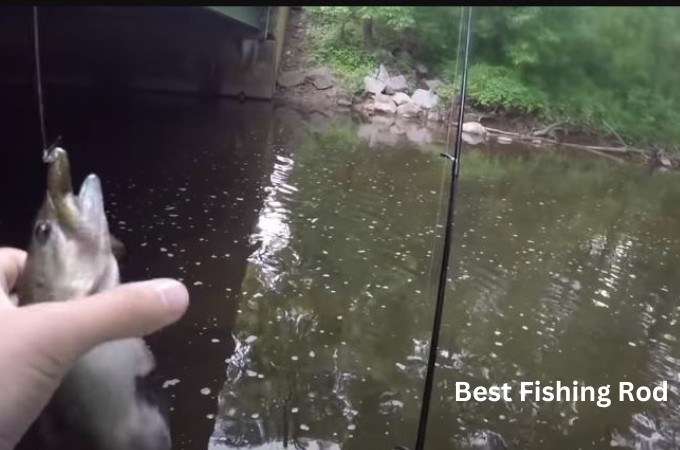Best Water Temperatures for Tarpon Fishing (Complete Guide)
Today we discuss the Best Water Temperatures for Tarpon Fishing. Tarpon fishing is a thrilling and exhilarating experience for anglers around the world. These majestic, silver-scaled fish are known for their powerful jumps, strong runs, and overall fighting ability. However, to maximize your chances of success when targeting tarpon, it’s crucial to understand the ideal water temperatures that these fish prefer.
In this comprehensive guide, we’ll dive deep into the optimal water temperatures for tarpon fishing and explore how this crucial environmental factor can impact your chances of landing these impressive gamefish. Whether you’re a seasoned tarpon angler or just getting started, this post will provide you with the knowledge and insights you need to time your tarpon fishing trips for maximum success.
Best Water Temperatures for Tarpon Fishing:
Understanding Tarpon Behavior and Water Temperatures
Tarpon are a highly migratory species that can be found in tropical and subtropical waters around the globe. These fish are particularly sensitive to water temperature and will often move in response to changes in their environment. Understanding their temperature preferences is key to locating and catching them effectively.
Optimal Water Temperature Range for Tarpon
Tarpon are typically found in water temperatures ranging from around 70°F (21°C) to 90°F (32°C). However, the ideal water temperature for tarpon fishing tends to fall within a narrower range, typically between 75°F (24°C) and 85°F (29°C).
At the lower end of this range, around 75°F (24°C), tarpon may be less active and less likely to aggressively strike at bait or lures. As the water temperature rises, tarpon become more energetic and more likely to feed actively. The optimal temperature range for the most consistent and aggressive tarpon activity is generally between 80°F (27°C) and 85°F (29°C).
Seasonal Patterns and Water Temperature
Tarpon exhibit distinct seasonal patterns in their movements and feeding behavior, which are closely tied to water temperature changes throughout the year. Understanding these seasonal patterns can help anglers time their tarpon fishing trips for the best chances of success.
In the spring, as water temperatures begin to warm, tarpon will start to migrate northward from their wintering grounds. This is an excellent time to target them, as they are actively feeding and preparing for the upcoming spawning season.
During the summer months, when water temperatures are at their highest, tarpon can be found in a variety of habitats, including estuaries, bays, and nearshore waters. This is often considered the peak of the tarpon fishing season, as the fish are highly active and aggressively feeding.
As the weather starts to cool in the fall, tarpon will begin to migrate back to their wintering grounds, often in deeper, warmer waters. While tarpon can still be caught during this time, the fishing may be less consistent as the fish become less active and more selective in their feeding.
Water Temperature and Tarpon Spawning
Water temperature also plays a crucial role in the spawning behavior of tarpon. Typically, tarpon will spawn when water temperatures reach the optimal range of 80°F (27°C) to 85°F (29°C). This often occurs during the late spring and early summer months in many regions.
During the spawning season, tarpon will aggregate in specific areas, such as offshore passes or deep channels, to release their eggs and sperm. Anglers who time their trips to coincide with this spawning activity can often enjoy some of the most exciting and productive tarpon fishing of the year.
Factors Affecting Water Temperatures for Tarpon Fishing
While the general optimal water temperature range for tarpon fishing is well-established, there are several factors that can influence the specific water temperatures in a given location and time of year. Understanding these factors can help anglers make more informed decisions about when and where to target tarpon.
Geographical Location and Latitude
The geographical location and latitude of a fishing area can have a significant impact on the water temperatures that tarpon prefer. In general, tarpon are found in tropical and subtropical regions, with their northernmost range extending into the southeastern United States and the Caribbean.
Regions closer to the equator, such as the Florida Keys or the Gulf of Mexico, tend to have warmer water temperatures throughout the year, making them ideal tarpon fishing destinations for a more extended season. In contrast, areas at higher latitudes, such as the Carolinas or Virginia, may have a shorter tarpon fishing season due to cooler water temperatures.
Tidal Patterns and Currents
Tidal patterns and ocean currents can also play a role in the water temperatures that tarpon prefer. In areas with strong tidal influences, such as estuaries or passes, the water temperature can fluctuate significantly throughout the day as the tide rises and falls.
Tarpon will often congregate in areas where warmer and cooler water masses mix, taking advantage of the optimal temperature range. Anglers should pay close attention to tidal and current patterns in their fishing areas to identify these temperature transition zones.
Depth and Thermoclines
The depth of the water can also impact the water temperature that tarpon prefer. In deeper waters, there may be distinct thermoclines, or layers of water with different temperatures, that tarpon will use to their advantage.
Tarpon may position themselves in the transition zone between the warmer surface waters and the cooler, deeper waters, taking advantage of the optimal temperature range. Anglers should use depth finders and other tools to identify these thermocline layers and target the areas where tarpon are most likely to be found.
Weather and Climate Patterns
Finally, broader weather and climate patterns can also influence the water temperatures that tarpon prefer. Factors such as air temperature, wind, and precipitation can all impact the overall temperature of the water in a given area.
For example, during periods of prolonged hot weather, the water temperatures may rise above the optimal range for tarpon, causing them to seek out cooler areas or become less active. Conversely, sudden cold fronts or heavy rainfall can cause the water temperatures to drop, making it less favorable for tarpon.
Anglers should closely monitor weather forecasts and be prepared to adjust their fishing strategies accordingly, targeting areas that are likely to maintain the optimal water temperatures for tarpon.
Strategies for Identifying and Targeting Optimal Water Temperatures
Now that we’ve explored the importance of water temperature for tarpon fishing, let’s dive into some practical strategies for identifying and targeting the optimal conditions.
Use Temperature Monitoring Tools
One of the most effective ways to locate tarpon is to use temperature monitoring tools, such as handheld thermometers, boat-mounted temperature sensors, or even smartphone apps that provide real-time water temperature data.
By closely monitoring the water temperature in your fishing areas, you can identify the specific locations and conditions that are most likely to attract tarpon. This information can then be used to plan your fishing trips and target the areas with the optimal water temperatures.
Consult Local Fishing Reports and Forecasts
In addition to your own temperature monitoring efforts, it’s also helpful to consult local fishing reports and weather forecasts to stay informed about the current and upcoming water temperature conditions in your target areas.
Many fishing guides, tackle shops, and online forums will provide regular updates on the water temperatures and tarpon activity in a given region. By staying up-to-date on this information, you can make more informed decisions about when and where to plan your tarpon fishing trips.
Observe and Analyze Tarpon Behavior
Another valuable strategy for identifying optimal water temperatures for tarpon is to closely observe the behavior and movement patterns of the fish themselves. By paying attention to where and how tarpon are feeding, resting, and moving, you can gain valuable insights into the water temperatures they prefer.
For example, if you notice tarpon actively feeding on the surface or in shallow water, it’s a good indication that the water temperature is within their optimal range. Conversely, if you see tarpon congregating in deeper, cooler waters, it may signal that the surface temperatures are too warm for their liking.
Experiment and Adjust Your Tactics
Finally, it’s important to be willing to experiment and adjust your tactics based on the water temperature conditions you encounter. Different water temperature ranges may require different fishing techniques, bait or lure selections, and presentation methods.
By remaining flexible and adapting your approach based on the prevailing water temperatures, you’ll be better equipped to consistently locate and target tarpon, regardless of the specific conditions you encounter.
Conclusion
Mastering the art of tarpon fishing requires a deep understanding of the species’ behavior and environmental preferences, with water temperature being a critical factor. By familiarizing yourself with the optimal water temperature range for tarpon, and the various factors that can influence these temperatures, you’ll be well on your way to planning and executing successful tarpon fishing trips.
Remember to utilize temperature monitoring tools, consult local fishing reports, observe tarpon behavior, and be willing to experiment with your tactics. With this knowledge and a dedication to the sport, you’ll be able to maximize your chances of landing these magnificent gamefish and creating unforgettable angling experiences.
So, the next time you set out to target tarpon, be sure to keep a close eye on the water temperatures and adjust your approach accordingly. Happy fishing!

